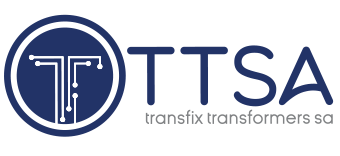Electricity and Energy Minister Dr Kgosientsho Ramokgopa has expressed confidence that tariff and non-tariff solutions can be found to ensure that Eskom is able to meet the obligations set by the National Treasury as part of the R256-billion debt-relief package while still allowing the entity to invest in new generation capacity. In a briefing called to mark the fact that, as of October 13, loadshedding had not been implemented for more than 200 days, Ramokgopa expressed support for the State-owned entity’s plan to build 2 GW of new wind and solar PV capacity over the coming two to three years.
Denmark, France, Germany and the UK, which are all partner countries supporting South Africa’s just energy transition (JET), have showcased a range of local, provincial and national projects and initiatives that are helping to drive the JET in Mpumalanga and the rest of South Africa. Denmark has 50 years of experience transitioning from an energy system heavily reliant on coal to its current electricity system that is dominated by solar PV and wind power, said energy supply, distribution and consumption organisation Danish Energy Agency deputy director-general Stine Rasmussen.
A study benchmarking the price of steel transmission grid pylon towers and what South African manufacturers can do to compete with Chinese and Turkish imports showed that “a bit of” stable demand was needed to enable local manufacturers to compete effectively. The ‘Price Benchmarking on Steel Towers in South Africa’ study by manufacturing support organisation the Localisation Support Fund (LSF) was one of three studies done to map out the components of the Eskom and National Transmission Company build programmes and how to get industry to participate, said LSF head of strategy Irshaad Kathrada.
A multibillion-dollar plan to expand South Africa’s electricity transmission network could throw a lifeline to the country’s corporate bond market as it struggles to recover from a post-pandemic slump. The National Transmission Company South Africa, a state-owned company that will operate separately from parent Eskom, said this week it plans to spend R112-billion on transmission capacity over the next five years.
The Lebalelo Water User Association (LWUA) has selected asset management company Sustainable Power Solutions (SPS) as the preferred bidder to deliver a renewable-energy solution for the first stage of the Olifants Management Model Programme (OMMP), a significant water infrastructure development programme in Limpopo. The OMMP, implemented by LWUA, is a public-private collaboration between government and the private sector, including mining companies and industrial users.
The 69 MW Msenge Emoyeni Wind Farm, located in Bedford in the Eastern Cape, has entered into commercial operation and is wheeling electricity into the national grid helping to green the electricity consumption of Sasol’s operations in the Free State The 16-turbine generation plant has been built by a consortium led by African Clean Energy Developments (ACED) and including African Infrastructure Investment Managers (AIIM) and Reatile Renewables.
The Danish and South African governments are partnering on a project to map the wind resources of the coal region of Mpumalanga, where access to the grid for new renewables projects is less constrained and where initiatives are under way to explore alternative livelihoods for workers and communities who could be affected by coal mine and power station closures. Known as ‘Wind Atlas of South Africa Phase 4 (WASA4)’, the initiative is being jointly funded by the Danish Energy Agency (DEA) and the Department of Mineral Resources and Energy and is being carried out by researchers from the Danish Technical University, the South African National Energy Development Institute, the Council for Scientific and Industrial Research, the University of Cape Town and the South African Weather Service.
South Africa has an ideal opportunity, and is well positioned, to leverage the potential of the emerging hydrogen economy and establish an integrated value chain. Amid global hydrogen economy conversations, South Africa has been working to create enabling policies and create an enabling environment for a hydrogen economy to thrive, a Creamer Media-hosted Hydrogen Economy webinar participants heard on Wednesday.
Home energy management company Plentify says its partnership with solar and electrical solutions installer Herholdts to distribute its SolarBot devices in South Africa, has helped customers to gain the maximum efficiency and cost savings from their solar systems.
With solar installation interest having stagnated since loadshedding was suspended in April, Plentify is driving the adoption of its SolarBot technology on the back of significant cost-savings that users can realise from fully using solar capacity and optimally discharging batteries.
The key problems in implementing renewable energy in Africa (including South Africa) are regulatory, participants in a panel discussion at Africa Oil Week (AOW) reported, on Wednesday. AOW is being held at the Cape Town International Convention Centre. The issues were not so much the amount of regulatory compliance needed but, what was often much more serious, the dilatoriness of government departments in processing applications and issuing authorisations. South African black-owned renewable (mainly wind) energy company Seriti Green CEO Peter Venn reported that it could take anything from six to 16 years in South Africa from the acquisition of a site to the start of construction of a wind farm. The company currently had five projects spread across four South African provinces (plus projects in East Africa), worth billions of rands.
INDUSTRY NEWS
- NERSA appoints Electricity Market Advisory Forum to guide power-market reformDecember 19, 2025 - 2:04 pm
- Eskom offers more details on envisaged roles of the NTCSA and the TSODecember 18, 2025 - 11:04 am
- NTCSA says any electricity deal to salvage Mozal must ensure its financial sustainabilityDecember 17, 2025 - 3:01 pm
WHERE TO FIND US
Address
9 Yellow Street
Botshabelo Industrial Area
Botshabelo, Free State
Call / Email Us
Tel: +27 (0) 61 956 6772
Email: info@transfix.co.za
